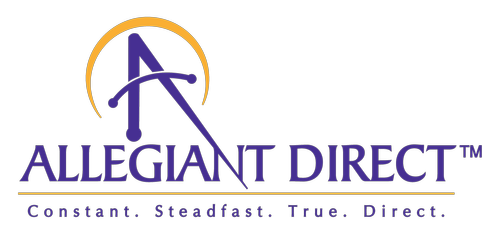The Allegiant Direct Blogs

When is it time to take a donor out of your renewal sequence?
By Mark Jacobson
Senior Consultant
When is it time to reassign or take a donor out of your standard renewal sequence?
MOVES MANAGEMENT in ANNUAL GIVING: Part Four
Multiple appeals to lapsed donors only make sense if the ROI from lapsed clusters is better than that of donor acquisition. Stop mailing to lapsed clusters that have a lower response rate than acquisition. For some, stop mailing altogether. For others, a cut back in appeal frequency.
Micromanage your lapsed selections and strategies!
In the past, mailing regularly to wide scope lapsed files was frequently cost-effective. But it’s 2025, and the cost of replacing that lapsed donor (especially using direct mail) with a new one via donor acquisition can be frightening.
Proper moves management can result in a more careful deployment of resources, growth in ROI, and improvements in net return. First, some important questions:
Do you know the cost per dollar raised/ROI of return with your donor acquisition?
In comparison, how about your donors with last gifts 24 or 36 months ago?
Your one-time only donors? Within the past 24 months? 36 months?
Donors with multiple gifts on file? Within 24 months? 36? 48?
In a program with multiple appeals to lapsed, can you identify at what point during the appeal sequence a borderline lapsed cluster shows an ROI less than acquisition? Right from the start? After two mailings? Other?
Adjusting Acquisition to Retention
Are you replacing your annual donor attrition (number of donors not renewing their support from the previous twelve-month period) with at least an offsetting number of new (acquisition) and recaptured lapsed donors?
Yes, you can build strategies to increase support from donors who have been retained. This can drive revenues up in a campaign year. But if you are not maintaining or growing the size of your donor file, you are living on borrowed time!
What can you do?
Let your data and analytics drive your strategies.
Review ROIs from clusters (recency, frequency, monetary) of your single AND multiple gift lapsed donors.
Prioritize lapsed clusters that have expected ROIs greater than that of expected ROIs from acquisition.
For “borderline” lapsed clusters, identify the appeal frequency that makes sense. Adjust lapsed and acquisition efforts to offset the attrition you have experienced from last year vs. the year before.
Example:
NPO #1 - brought 5,000 0–12-month donors into its next campaign. In this campaign just concluded, 3,750 of these donors renewed their support, 1,250 did not.
Next steps?
First, identify individual lapsed clusters (by gift frequency, recency and monetary) that had a response rate that exceeded that of donor acquisition. Adjust appeal frequency to ensure those lapsed that are solicited out-perform acquisition.
Second, let your data inform your strategies on who you continue to solicit and how frequently.
Let your expected donor retention and lapsed recapture rate dictate the size and scope of your acquisition. Once you have identified the best performers in lapsed/acquisition, you can set a strategy on how best to replace your attrition of 1,250.
From there, your invigorated mid-level and monthly giving programs will provide net gain!
TO DISCUSS YOUR PROGRAM WITH ALLEGIANT DIRECT, CLICK HERE NOW:
BOOK A CALL
© 2025 Allegiant Direct, Inc.
Frequently asked questions
What kind of copy gets the best response for healthcare fundraising?
Mainly, copy that’s relevant, focused on the donor and non-institutional. Our experience is that it needs to be something related to heart or cancer and perhaps technology that does something better, keeps you out of the hospital and/or is less costly and less invasive. For children’s hospitals and hospices, patient stories usually work best, but appeals for new technology, equipment or programs can also work well.
Which is best - a window or closed face envelope?
We use both depending on the situation. A closed face envelope is a little more expensive. However, the #10 window envelope has been a workhorse for us for many decades. For hospital grateful patients, we think it may work because it approximates the look of a hospital bill. You can split test window vs. closed face, and sometimes you’ll find that a window does better, and sometimes a closed face works better. A closed face envelope has a more professionally looking business correspondence feel to it.
What about using a teaser on the outside envelope?
We usually come down on the side of not using teasers. The reason - if you put something on the envelope that gives the recipient an idea of what's inside, and they're not interested – like if they can tell it's a fundraising letter - then the trash can is always nearby. The problem with teasers is that most people who write teasers do not know how to tease properly. A teaser has to have some mystery to it. So, when you see it, you say, “What's this all about?” Having no teaser is its own mystery because you're wondering “why are these people writing me?” Then you want to find out and you open the envelope. We’ve used teasers in the past and tested them. Sometimes they work, and sometimes they don't. More often than not, they don't work. So, unless you've got a superb teaser, you may want to not use one at all.
Which lists work best for healthcare fundraising?
Most of our hospital clients solicit former patients, and they mostly work well. But if you’re a hospice, you have few numbers of bereaved individuals to solicit. By the same token, if you’re a children’s hospital, you have a minimum number of patients to contact. Parents of children’s hospital patients (the guarantors) are too young to be good philanthropic prospects. As a result, what we've found is that rented lists of donors to healthcare causes in your area often work better than patients. With hospices and children’s homes, you almost have no choice but to use rented names to build your donor base. Perhaps surprisingly, rented names tend to outperform hospital grateful patients. But why would a person who hasn't been in your hospital perform better than someone who has? With patients, we really only know two things about them. We know they're the correct age because we can select them based on age or date of birth from the patient record. We also know they've been in the hospital. But that’s it. We don't know anything else about them. But with a rented name, we know they're the right age because they've given to other nonprofit organizations. They’re definitely philanthropic. They’ve also given through the mail and are responsive to mail appeals. We also know they like to give, and particularly to healthcare causes. So that gives them an edge on former patients.
Book A Call
(FREE 30 minute consult)
To make your FREE consult appointment, select a date and click submit,
then you will be taken to a page to select the time. We look forward to chatting
with you! (If our calendar is not available, please refresh your page.)
Contact Us for More Information
For general inquiries or to receive additional information about our services, please write or call us.
Allegiant Direct, Inc.
278 Franklin Road, Suite 290
Brentwood, TN 37027
Still have questions?

Allegiant Direct, Inc.
278 Franklin Road, Suite 290
Brentwood, TN 37027
Marketing Systems Built By Be Known
We make no income or earnings claims - your results may vary.
We present testimonials and insights about other people’s experiences with our website for purposes of illustration only. The testimonials and examples used are of actual clients. They are not intended to represent or guarantee that current or future clients will achieve the same or similar results; rather, these testimonials represent what is possible for illustrative purposes only.
This site is not a part of the Google or Facebook website or Google/Facebook/Meta Inc. Additionally, this site is NOT endorsed by or affiliated with Google or Facebook in any way. GOOGLE and FACEBOOK are trademarks of GOOGLE, Inc. and FACEBOOK, Inc or Meta, Inc.


